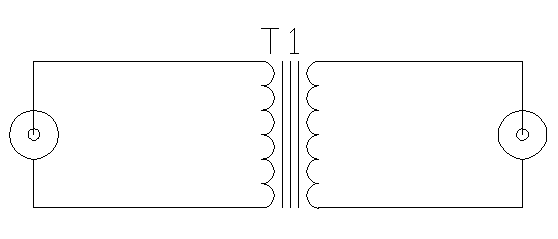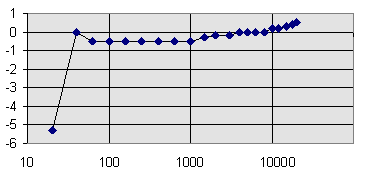Audio line isolation transformer
Copyright Tomi Engdahl 1996-2010
If you want to do the ground loop elimination in audio path, you have to cut the galvanic connection but pass the whole audio range. The simplest and most common way to do the isolation is use audio transformer which is ment for audio use. Transformers for audio use have some problems like distorted bass response and attenuating in high-frequency response. Basically a transformer slows down upper frequencies and allow the low frequencies to pass first, creating what we perceive as a "fat/warm" tone. Inadequate frequency response on the low end (rolloff at like 20Hz), causes low frequencies to be "slowed", allowing the upper frequencies to be heard first, this is perceived as "barky/ brittle". High-quality audio transformers cover whole audio band with good response, but those are quite expensive.
There are ready made circuits available from shops selling car audio stuff (ground loops are usually problem also in car environment). If you live in USA, take a look in Radio Shack's catalog on car electronics or check the Radio Shack Product Support pages which have specifications of Ground LP Isolator (270-0054) which cost about $15US. For more professional product check JK Audio Pureformer Stereo Isolation Transformer. Those products seem to be quite suitable for solving ground loop problems in consumer audio systems, but I have not tested them myself. Europeans should take a look at their nearest dealer which carriers Monacor products, because Monacor's new catalogue lists FGA-40 (Best.-Nr. 06.4370) Ground Isolators which are 1:1 audio isolation with 10 kohm impedance (look quite good on the catalogue).
For professional audio use buy high quality commercial audio isolation/balancing transformers (those are very handy to keep around to solve unexpected ground loop problems). DI-boxes are also used to solve ground loop problems in a PA situations where different instruments are connected to mixing desk. Most DI boxes are active and are almost useless are getting rid of earth loops and stopping buzzes & hums etc. A GOOD passive DI which provides isolation is the only way to go.
Building yourself an audio isolation transformer
If you want to build one yourself, you have to get two audio transformers which have 1:1 transformation ratio and greater than 1 kohm impedance. There are high quality audio transformers in the markes that meet those specs, but those can be quite expensive. Another option it to use 600:600 ohm isolation transformers widely available for telecommunications and other uses. Those are not that high quality as good audio transformers, but can be well adequate for many not so demanding multimedia applications like computer audio if suitable transformer is selected.

I built some of my audio line isolators usign two high quality telephone line coupling transformers which have 600 ohm impedance (I built later some new ones using some high quality audio transformers). This is the most commonly transformer type used in high-speed modems. Best of those are quite wideband devices (far more bandwidth than usual 300-3400 Hz as used in telephone). Using two of those transformers and few RCA connectors made quite satisfactory (but not really hifi) audio isolator. The connection is easy: connect primary side of the transformer to one audio connector and secondary to other.
I used EOP Z1612 transformers in my test circuit and got quite acceptable frequency response of +-1 dB from 40 Hz to 20 kHz as you can see in figure below. The bass frequency below 40 Hz is not good.

The frequency measurements were made with Nacamichi T-100 Audio Analyzer and the isolator circuit was connected between it's 600 ohm output and 50 kohm input. I don't know if EOP Z1612 transformers are still available at Farnell, but you can try. If you are looking for other high quality transformers which could be a used, I would try ETAL P2001. I haven't been able to test their performance in this application, but they have proven to good transformers in other laboratory test and applications. Avoid cheapest telephone and audio transformers, because their performance is very poor at frequencies over about 5 kHz (for example Radio Shack (273-1374)).
Notes about signal phasing
Notice one thing in the transformer wiring: Many transformers have the coil starting marked with dot. If you put the audio signal to the transformer in such way that the center wire in RCA connector is always connected to the coil end marked as coil start you will get a nice isolator. If you for some reason connect the wires in one side of the transformer in the wring way, your transformer will cause a 180 degree phase shift to your audio signal. If some of the signals in your audio system will get this kind of phase shift and some other will not, you will face all kinds of sound quality prolems. If you have this kind of system, it is best to test that the audio isolation transformer will not cause unitended phase shift to the signal.
Tomi Engdahl <[email protected]>









